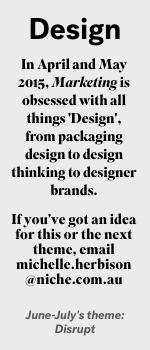Positive change in technology through user-centred design
Share
John Swadener of PwC shares his thoughts on how user-centred design can help businesses to effect positive change with the use of new technology and innovation. This article appears in the latest edition of The SoDA Report.
 As Chris Buettner (managing editor of The SoDA Report) underscores in his introduction to this edition, effecting real, positive change is not a formulaic process. It is an interpretive dance where problems are often ill-defined, tasks are unclear, processes are experimental, and outcomes emerge over time through continuous interactions with others. Each of us can effect positive change across the industry based on a real understanding of others’ needs combined with our own appetite for technical innovation.
As Chris Buettner (managing editor of The SoDA Report) underscores in his introduction to this edition, effecting real, positive change is not a formulaic process. It is an interpretive dance where problems are often ill-defined, tasks are unclear, processes are experimental, and outcomes emerge over time through continuous interactions with others. Each of us can effect positive change across the industry based on a real understanding of others’ needs combined with our own appetite for technical innovation.
Maybe it’s just us, but “it was the best of times; it was the worst of times” rings more true today than most times in the past. We believe the time has never been better for each of us to effect positive change through innovation.
 On wearables
On wearables
Let’s start specific and then go broad.
An example that touches most of us as consumers and practitioners includes the phenomenon of wearables. Based on forecasts, the number of annually shipped wearable devices is expected to proliferate, and the growth rate rivals that of tablets when they were introduced into the mainstream in 2012.
However, a number of wearable device makers are already witnessing a lapse in consumer engagement when they examine how early adopters are using the new technology. The ‘best of times’ mindset leads us to believe that designers will drive better engagement in the next six months through innovation and the development of the next evolution of wearables. However, unless they focus on human-centered design – rather than simply racing to make new technology available – wearables will remain a mere novelty.
New business opportunities
What about when we are challenged to identify new business opportunities? As leaders within a big firm, we’ve worked to instill a B2P mindset in our staff. Business-to-people. In other words, if we make a positive impact on people, then business results will follow.
As part of this mindset, we challenge ourselves to explore big ideas every 15 days across a wide array of industries. Using collaborative design sessions and combinations of ‘macro’ and ‘micro’ teams, we explore major challenges from a variety of perspectives, always focusing first on making an impact on people. Even if we ultimately decide that an idea we’ve explored as part of this process will not spur positive change, we still take pride in showing how our thinking played out. We believe this approach is much more valuable than keeping our recommendations at a highly conceptual or theoretical level.
Disruption and innovation
What about those who work in industries that aren’t typically known for innovation? Let’s choose one. Insurance. From PwC’s 2015 Annual Global CEO Survey, we know that 69% of insurance CEOs are concerned about the disruptive impact of technological advances over the next five years.
That percentage is higher than CEOs in almost all other industries. Insurance CEOs know innovation can help sharpen data analytics, enhance the customer experience and strengthen efficiency. One global insurance CEO said, “I think you have to look at disrupters because they often come in with very smart innovations and different propositions.”
As you look to innovate, think about making even just one positive change. Even a small change can generate substantial benefits. In the next six months, can you hire six new employees with diverse talents and a broader range of skills than you would have normally done? Diversity is a known way to enhance innovative thinking. Unfortunately, we know from our own research that nearly two in five companies have no formal plans to seek out talent that is different.
Innovation and positive change
Revolutionary or evolutionary. People based or technology based. Big or small. Each of us can effect positive change. Start by understanding people you’re innovating for, combine that with looking to diverse team members for ideas, marry a dose of new ways to do work, and experiment. Results will follow.
John Swadener leads the marketing transformation practice for PwC US and is one of the architects and core leaders of PwC Digital, a team of over 2,000 employees from around the world.















